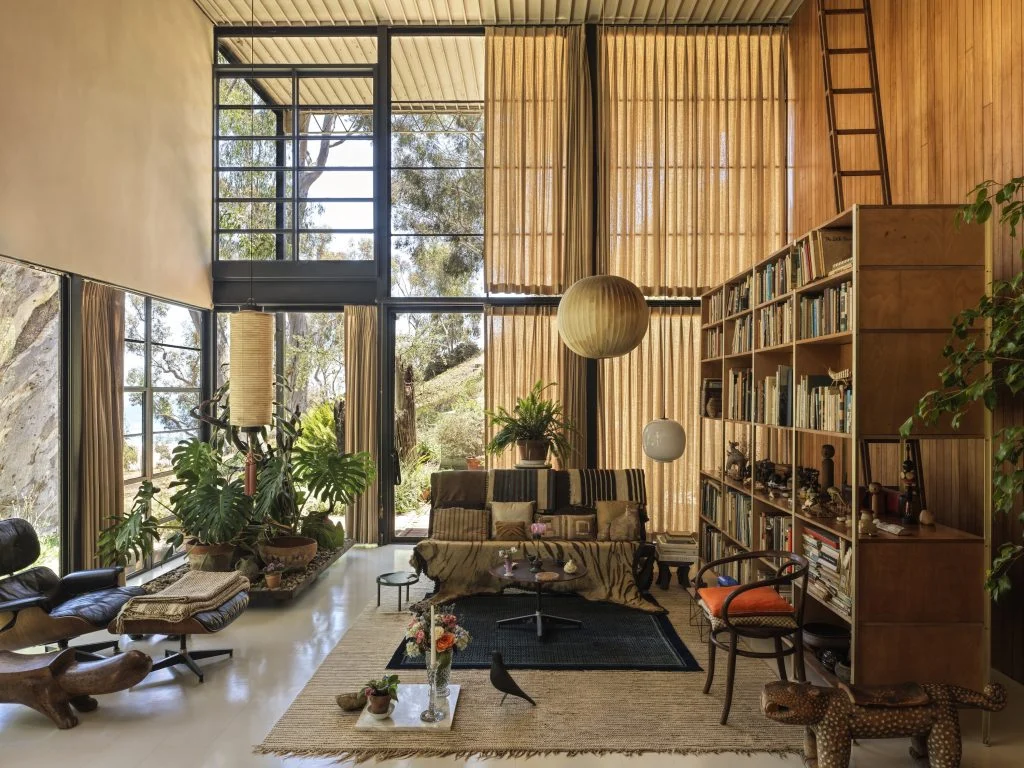The Machine with a Soul: The Enduring Poetry of the Eames House
- Eidolon
- 5 days ago
- 3 min read
It began, as all good architecture does, with a question.
How could one build a house that would not destroy the meadow — that would live with the landscape rather than upon it?
When Charles and Ray Eames stood on that eucalyptus-covered bluff in Pacific Palisades, they were not merely designing a home. They were sketching an idea: that architecture could exist as a frame for life, rather than a monument to it. Their answer would become Case Study House No. 8, the Eames House — a structure so modest and so radical that it still hums with quiet intelligence today.

A New Kind of House for a New Kind of Life
The Eames House was born from Arts & Architecture magazine’s Case Study program — a postwar challenge to the American architectural imagination. The brief was simple: design homes that embodied “man’s life in the modern world.” For Charles and Ray, both designers rather than architects by training, this was less a commission than a calling.
Their initial concept — the so-called “Bridge House” — designed with Eero Saarinen, envisioned a dramatic steel-framed structure suspended across the meadow like an industrial trestle. Prefabricated steel was ordered; the design was published. But when wartime shortages delayed the material’s arrival, something deeper began to stir.
By the time the steel finally arrived, Charles and Ray had fallen in love with the meadow itself. Its stillness. Its light. Its rhythm. They abandoned the bridge. They began again.
A House Reimagined
In the redesign, the home stepped lightly onto the land rather than over it. Using the same catalog-ordered materials, the Eameses created two interlocking structures — a residence and a studio — assembled like a modernist collage: slender black steel, colored panels, translucent glass, each plane forming a quiet conversation between art and utility.
The structure’s order was industrial; its spirit, profoundly human. Charles once wrote, “It is interesting to consider how the rigidity of the system was responsible for the free use of space.” That paradox — discipline yielding freedom — would become the Eames philosophy incarnate.
In just 16 hours, the steel frame rose, its skeletal grid shimmering against the California light. By December 1949, the house was complete. On Christmas Eve, Charles and Ray moved in.
A Machine with a Soul
Photographs from the early years show a luminous box floating above the earth — sunlight spilling through translucent panels, the ocean glinting beyond the meadow. Inside, the house is less about grandeur and more about intimacy. It is filled with prototypes, folk art, shells, pebbles, textiles, and chairs that would become icons. It is a living archive of two restless, curious minds.
Charles called it “a machine for living.” But unlike Le Corbusier’s cold rationalism, this machine had a soul. Ray’s hand is everywhere — in the choice of color, the play of texture, the rhythm of everyday beauty. She softened modernism’s edges, proving that rigor and joy could coexist.
The Eames House is both precise and playful — a Mondrian grid softened by flowers, a temple of steel warmed by human touch.
Living Architecture
In their 1955 film House: After Five Years of Living, Charles and Ray captured their home not as an object, but as an organism. It breathes. Light and shadow move across its surfaces; the eucalyptus trees sway outside, now towering over the roofline. You can feel the passage of time — the way nature reclaims what is hers, gently and without apology.
The house, like the lives it held, was always in process. Its interiors evolved daily — objects rearranged, compositions remade — a quiet act of living design.
After Charles’s death in 1979 and Ray’s in 1988, the house fell still. Yet it remains a living monument — preserved by their daughter Lucia and grandson Eames Demetrios, who continue to guard its soul from the freeze of nostalgia.
A Lesson in Lightness
The Eames House endures not because of its fame, but because of its philosophy. It reminds us that modernism, at its best, is not about glass or geometry — it is about grace. About doing more with less. About listening to the land, the light, and to life itself.
When you stand before it today, you realize it was never simply a “design.” It was a response — to its time, its place, and its purpose.




















Comments